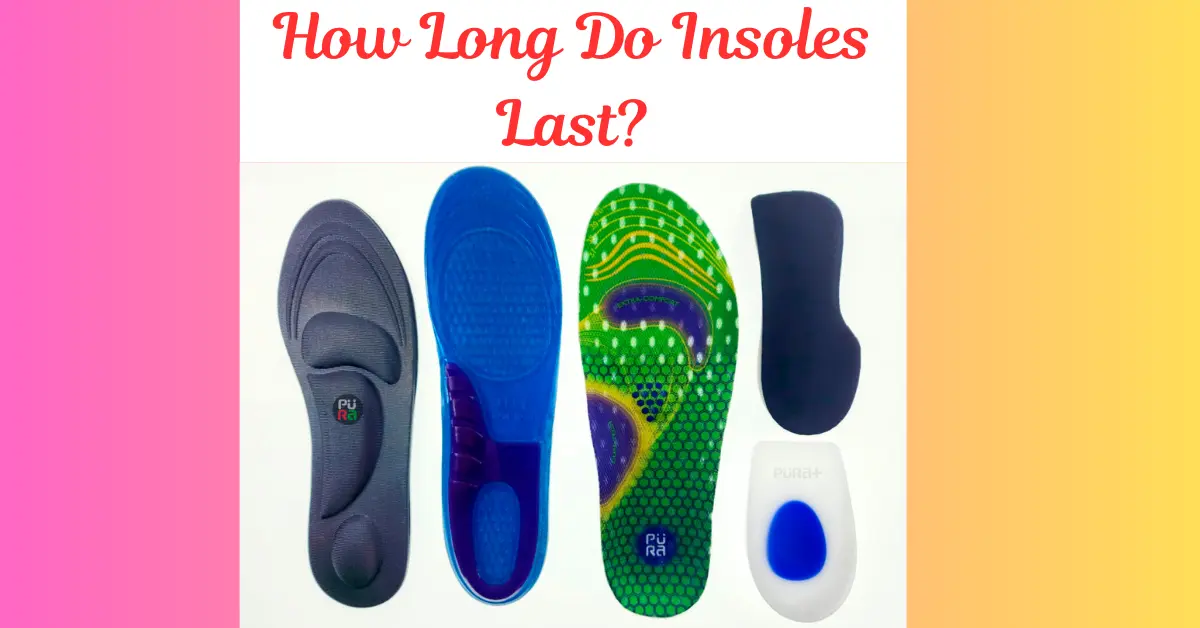
Insoles, inserts, and footbeds promote healthy feet while improving shoe comfort. They can be designed with extra padding to support the arch or address specific foot issues. Experts recommend when to change your insoles and How Long Do Insoles Last?
The following are some of the factors that determine their lifespan
How will you know, and what does it tell you? When should you replace the old pair (and how can it be kept longer alive)?
What are Insoles? What for them and their importance
Orthotic Insole are the shoe inserts you put inside your shoes to add internal comfort and cushioning. They exist in different kinds, which include
Cushioning Insoles
These are for additional shock absorption and suppleness.
Orthotic Insoles
Traditional Running Shoes -> These are one-size-fits-most meant to address common foot issues such as flat feet, plantar fasciitis, or high arches.
Custom Insoles
These are designed especially for your feet, according to the instinctive shape of the foot and its essentials. They are also really valuable. They can help reduce pain, improve athletic performance, prevent injury, and keep your feet healthy. However, you can enjoy the benefits only when you use them in good condition.
Their Lifespan and Influences
These shoes wear down with the duration of time, just like leather, for several reasons:
Material
The material used in the composition of your footbed will largely determine its longevity. Insoles comprising gel, foam, and leather break down much faster than those made from longer-lasting materials such as carbon fiber or high-density plastic.
Design (Frequency and Intensity of Use)
Insoles worn every day or for high-impact activities such as running or sports will wear out more quickly than those used occasionally and for lower-impact activities.
Shoes
How you pair them with footwear can impact the amount of wear. Supportive shoes that can conform slightly in most cases can extend Life, providing good support, but a snug fit can help them last longer, whereas ill-fitting and or unsupporting shoes will see them wear out faster.
Weight
Generally, the heavier you are, the faster your insoles wear out, as more pressure and stress are placed on the material.
Foot Conditions — People with certain foot conditions that demand more support can wear out their insoles sooner.
Mean Life of various types.
Although their lifespan depends on different factors, we mentioned here are simple guidelines:
With regular use, Cushioning Insoles will last about six months to a year.
Orthotic Insoles ( Custom orthotics ) usually last 2-3 years, but OTCs usually get rotten and must be changed every half-year; they may deteriorate every six months to a year.
Sport and Running Insoles are created to sustain high-impact actions and are usually worn every six months, depending on the intensity of use.
Gel Insoles compress quickly; hence, they often lose their cushioning ability in 3-6 months, so you must buy new ones frequently.
When You Should We Look Sign of Replacing Your Insoles
Looking for signs of wear and tear in your audio cassettes is just as important as inspecting your insoles. Any or all of these can indicate that you need to have them replaced.
The Wear and Tear Shows
If you see cracks or holes, no matter how small, or if the shoes are drastically worn out, it is a sign that your work boots need replacement soon.
No More Comfortable/Support Cushioning
If the padding within your shoe has started to flatten or compress, it is no longer effective in providing cushion and support.
Foot Pain
You’ll know because you have increased foot pain or discomfort, especially in the areas your orthotics had previously eased.
Smell
If you can never eliminate the smell, even after washing them thoroughly, they are full of bacteria and are done for.
Shapeshifting
You need another pair if they have changed in form compared to their normal house and do not sound like a good fit for birds.
Extend the life of Your Insoles
Here is what you can do to ensure their life lasts much longer.
Besides this, Do Proper Cleaning
Clean your insole regularly per the instructions. This will also prevent the growth of harmful bacteria and stank smells.
Rotation
If you have several pairs of shoes rotate which one contains the insole. This brings down the wear on a sole pair.
Supportive Shoes
Ensure that the shoes you wear with them are sympathetic. Old and poorly structured shoes can also cause the insoles to wear out faster.
Store Properly
When not in use, store them in a dry, cool place. Do not expose them to direct sunlight or high heat, which can cause the materials of their construction to deteriorate.
Adhere to Usage Guidelines
Follow the manufacturer’s recommended usage guidelines. Exceptional, running insoles are best suitable for running, not daily wear.
Customizable Plantar Fasciitis Insoles vs OTC Plantar Fasciitis Insoles Categorizing these products
Custom insoles are more expensive but made to fit your foot and its structure: custom is often best for better support, which lasts longer than over-the-counter choices.
A custom insole: If you experience chronic foot problems or need special support, splurging on a well-crafted one makes sense.
When to Seek Help from Professional
However, if you use a new insole and continue to experience foot pain or discomfort, it might be time to see a healthcare professional. Podiatrists may also recommend their professional suggestions for helping your requirements, including custom orthotics if required and other treatments.
Conclusion
Insoles are important for maintaining good foot health by delivering essential support, shock absorption, and comfort. Knowing what factors influence their lifespan and how to detect that they are being worn out gives you more control over your wheel-bearing maintenance habits. If you follow these guidelines, your rollers will serve their purpose for longer. Properly care for your insoles and use them with the right footwear.
Consistently checking on the state of your insoles and replacing them when necessary will ensure that this powerful ally tends to every step—even during normal day-to-day activities or high-impact play. Spending time finding the best insoles, caring for them, and maintaining your shoe gear will benefit all facets of foot health.


